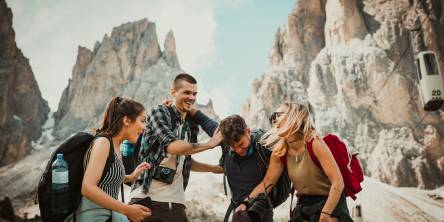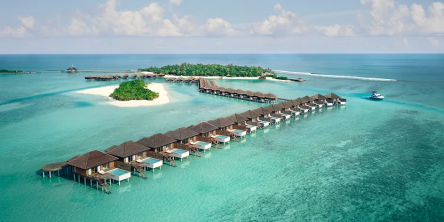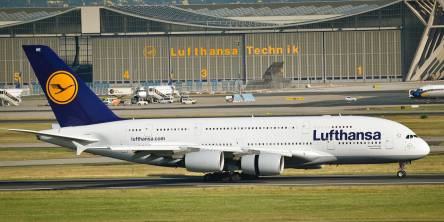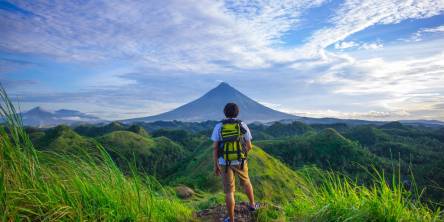The Everest Base Camp Trek in Nepal- Everything You Need To Know
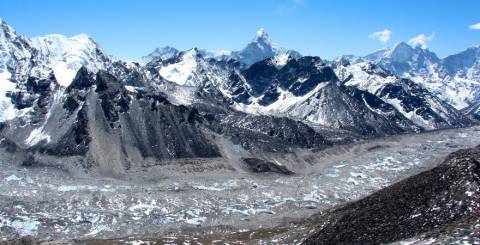
The Everest Base Camp Trek, among many trekking journeys in Nepal, is the most popular and sought-after trekking journey. Its popularity is huge among many travelers and trekking enthusiastic from all around the world. It takes place in the Khumbu region of Nepal and because of the region’s many natural and cultural attributes, the Everest Base Camp Trekking is preferred by many. The trekking journey goes through many ethnic Sherpa villages, a national park, a popular vantage point all the way to the base camp of the world’s highest mountain peak- Mount Everest. It is a great way to learn and experience Nepal’s mountain culture and to be immersed in the country’s marvelous natural landscapes and topographical features. Since Mount Everest’s first conquest by Sir Edmund Hillary and Tenzing Norgay Sherpa in 1953, trekking journeys to the base camp of the mountain has been rising in steady popularity. It is cheap to do, falls under the relatively moderate trip grading level, can be done by people of all demographics and experiences and can be done at all times of the year. Base Camp Trekking to Everest also plays a major responsibility in significant revenue generation in the country. Done by thousands of trekkers every year, the Base Camp Trek employs hundreds of porters in the mountains and provides earning opportunity to many people in the remote parts of the region. The Khumbu’s unique beauty, its cultural prominence and its many Himalayan ranges- the tallest in the world, makes trekking journeys an experience of a lifetime.

The Everest Base Camp Trekking Trail
The EBC Trek takes place in the Khumbu region, which lies in northeastern Nepal. The Khumbu region is part of the Solukhumbu district which falls under the Sagarmatha Zone. The region is regarded as a prime Sherpa settlement of the country and has many villages and towns that are extensively occupied by Sherpa communities and people who follow Buddhism. As such, many chortens, Gompas, Mani-stone walls with carved prayers and colorful Buddhist prayer flags can be seen throughout the trekking journey.
From Kathmandu to Lukla
As with most trekking journeys in the Khumbu, the EBC Trek generally starts with a flight from Kathmandu to Lukla. This is the easiest, the fastest and the most popular way of starting the trekking journey from the capital. Flights from Kathmandu to Lukla occur every day at all times, and it lasts for about 35 to 40 minutes. Hiking to Lukla can also be done from Kathmandu, but it takes about 5 days to reach Lukla by hiking. The Lukla flight is considered by many as one of the most dramatic flight journeys in the world. The Lukla Airport is also located on a cliff and has a single runway that is capable of taking in only one plane at a time. The runway also drops off to the gaping valley below towards its end. Lukla is the first major small town of the Khumbu and because it is the starting point of many trekking journeys, it has many guesthouses and lodges that cater to tourists and trekkers. The change in the terrain and the environment is immediately felt upon landing at Lukla because the town is surrounded by tall green forest-covered hills and views of distant mountain peaks can be seen. Trekkers can stay overnight here, but most prefer to hike further out to the next village of Phakding and stay there. Phakding lies approximately about 8 kilometers away from Lukla and it takes about 3 hours of hiking through beautiful trekking trail and smaller villages and settlements to reach.
From Lukla to Phakding to Namche Bazaar
The view of Mount Khumbila from Phakding is spectacular! After getting a good night’s sleep, the trekking journey continues on to the next town of Namche Bazaar. Sagarmatha National Park is entered en route to Namche. The entrance to the park lies at Monjo and it is a pleasant hike through the wide woods and forests of the national park to the celebrated town of Namche. Also famously known as the “Gateway to the High Himalayas”- Namche Bazaar is considered the commercial hub of the Khumbu region. It is extremely popular all over Nepal and is a great place to acclimatize. Trekkers spend at least a day in the town for acclimatization. Namche lies on a side face of a hill and presents a terrace-like topography. Houses and huts are situated at different levels of the terrace on the hill and standing at the bottom flat ground of the town is like standing on an amphitheatre. Views of Mount Everest, Thamserku and the Kongdi RI from Namche are amazing. While spending the day here, trekkers can visit the Everest Photo Gallery or the Sherpa Culture Museum. The renowned Everest View Hotel also lies a little distance away from Namche and it is listed in the Guinness Book of World Records as the highest located Hotel in the world. A lovely respite in the hotel with tea and the view of the cerulean Mount Everest massif can be enjoyed while staying at Namche. The Syangboche Airstrip can also be visited. It lies just above Namche on a flat strip of mountain land and offers amazing panoramic view of the town and the distant Himalayas.
Namche Bazaar to Tengboche
The village of Tengboche lies at the confluence of the Imja Khola and the Dudh Koshi Rivers in the Imja Valley. It is situated about 11 kilometers away from Namche and is also shares the same popularity as Namche. While Namche is known as the commercial hub of the Khumbu, Tengboche is known as its spiritual centre. The famous Tengboche Monastery- the largest Buddhist Monastery of the region, lies here. The monastery is visited by many trekkers for prayer and blessings of a successful trekking journey. Tengboche also provides amazing panoramic views of Himalayan peaks like the Ama Dablam, Lhotse, Nuptse, Tawache and Mount Everest among many more from its ridges. The village is surrounded by tall hills that are covered in rhododendron trees. During the spring, the blooming rhododendron flowers make the village look absolutely lively and blissful. Many Impeyan pheasants and Monal birds can be seen roosting on the trees of the forests as well. Trekkers stay overnight at the many guesthouses here and continue on the trek the next day.
Tengboche to Dingboche
Dingboche is a small village that lies within the Chhukung Valley at an elevation of 4,410 meters. The trekking trail to the Everest Base Camp goes through here and because of this- Dingboche is visited by many trekkers. The village is also used for acclimatization. The Nagerjun Hill, which lies close to the village, acts like a vantage point and a short side-hike can be taken to the hill for looking at beautiful panoramic views of peaks like the Lobuche East, the Lobuche West, the Kangtega, the Taboche Peak, Thamserku and the Ama Dablam. Sometimes, if the weather is clear, view of Mount Makalu can also be seen. The view of the gaping Pheriche valley fro the hill is also quite fascinating. Another special feature of Dingboche is its kilometer long stone wall that surrounds the entire village. The wall is built to reduce the impact of the cold winds that sometimes sweeps down the valley on the village crops. Dingboche also receives more sunlight compared to other mountain villages of the Khumbu, and because of this, it is also called “the Summer Valley”. During the peak trekking seasons, many trekkers can be seen sunbathing in the village lodges.
Dingboche to the Everest Base Camp
From Dingboche, the trekking trail further opens out uphill to reach the villages of Pheriche, Lobuche and Gorakshep; and from Gorakshep, the Everest Base Camp Trek. There lies a Trekkers Aid Post at Pheriche as well- which is run by Western Volunteer Doctors and assisted by the Himalayan Rescue Association. On the path to the base camp, trekkers generally stop at Lobuche overnight and finally reach the base camp the next day. The vantage point of Kalapatthar is also visited after the base camp. Trekkers wake up in the early hours of dawn and hike to Kalapatthar to look at the view of the sunrise from amidst the Mount Everest massif. It is famed for amazing panorama of the Himalayas.
Trekking Gears and Baggage
Most of, if not all, trekking equipments and gears can be bought in Kathmandu. Gears and equipments like hiking poles and trekking boots can also be rented or hired. Important trekking equipments include warm clothes that are lined with fleece, sunglasses, duffle bags, sleeping bags, down jackets and day packs. Although trekking boots can be bought in Kathmandu, it is recommended and advised to have one’s own trekking boots that are comfortable to wear and that have been “broken into”. Packing as light as possible is also the best option. Carrying only the necessary and essential items for the trek reduces the chance of hassles or items being lost or misplaced. Most trekkers and travelers of the Khumbu hire porters for carrying the weight of the duffle bags. This has to be considered while packing as well. A porter can carry up to 10 to 12 kg of weight from a single trekker. That is why carrying unnecessary items and extra things aren’t ideal. Only the equipments and items which are important and useful should be packed. Hotels in Kathmandu generally provide the service of safety storage lockers where people can store their excess luggage until they come back from the trek. Baggage allowance from Kathmandu to Lukla is also only 15 kg per person. Extra 5 kg as hand-carry can also be taken.
Accommodations and Meals during the Trek
A whole variety of Hotels are available for choices in Kathmandu, but that may not be the case in the mountains. In the Himalayan villages while trekking, accommodations are provided by guesthouses and lodges. Generally, twin-sharing lodge-to-lodge accommodation is the most viable option available in the mountains. The accommodations are rudimentary and offer basic services. Some trekkers also tend to camp out, but with the guesthouses and the lodges, it isn’t an absolute necessity to camp out at night. Hot water is also not readily available; and so is the laundry service. The guesthouses charge extra money for using hot water. But the guesthouses and lodges are quite comfortable and some even provide wifi services. During peak trekking seasons when the crowd gets high, trekkers are expected to share the room with other trekkers (of the same gender). Guesthouses and lodges at Namche, Phakding and Lukla even have western-style toilets.
All sorts of meals are available in the guesthouses. Both vegetarian and non-vegetarian meals are present. Breakfast and dinner are served in the guesthouses and lunch is had while on the hike from location to the next. Breakfast is served early in the morning at around 8:00 and because darkness engulfs the mountain rapidly after the sun sets, dinner usually occurs at around 5:00 or 6:00, depending on the schedule. Breakfast at most guesthouses consist of Oatmeals, bread and butter/jam/honey, pasta or noodles, eggs or Chapattis and vegetables. The meals vary from dumpling and soups to rice and lentils for lunch and dinner. Rice is the staple food of the country and is found at all places throughout the trek. It is fulfilling and provides good energy.
Drinking water can be brought from the shops in the mountains. Many springs, wells, small brooks and water-holes can found along the trekking journey at various villages. But because the water from these sources are not suitable for direct consumption, extra precautionary measures have to be taken, like using water-purification tablets or water-pumps.
Altitude Sickness and Acclimatization while Trekking
Altitude Sickness is always a threat that looms over trekkers while they are doing the Everest Base Camp Trek journey. Although the chances of actually getting sick varies from person to person, it is important to take good care of your health and to properly be acclimatized in order to not get altitude sick in the mountains. Important pointers for staying altitude-sick free is to stay hydrated, eat contently and healthily, get plenty of sleep at night and to give proper acclimatization time for the body to adjust to high altitude. It does not do good to rush through the trek without giving the body the chance to get used to the high altitude conditions. That is why trekking at your own comfortable pace and going slow is the key to avoid the sickness. Some symptoms of the Altitude Sickness include headache, loss of sleep and loss of appetite. If the symptoms persist while trekking, then it is important to take rest and gain back strength. Medicines can also be taken for this, like Diamox. Many trekkers take medicines for Altitude Sickness from the very get-go at Kathmandu itself to avoid getting sick later on in the journey.
The Best Time to do the Trek
Although the Everest Base Camp Trek can be done at all times throughout the year, the spring and the autumn seasons are considered the best trekking seasons. Spring occurs from March to May and autumn from the months of September to December. The temperature and weather during spring and autumn are average and present clear skies. The sun shines during the day and temperatures drop at night, but it does not hover on extreme conditions like the winter season. Winter and summer are considered as not ideal trekking months because as mentioned, winter season has extreme cold temperatures and heavy snow that can result in some paths being blocked or snowed-in. The summer season is also the season of summer showers and the monsoon. It rains constantly and trekking trails in the mountain become muddy. The rain clouds also cover the sight of the Himalayas. That is why most trekkers arrive in Nepal for EBC Trek during autumn and spring. The trekking crowd becomes high and flights tend to get booked very quickly.
The Everest Base Camp Trek has many highlights. It is one of the best trekking journeys in the world and presents amazing terrains and diverse topographical hallmarks like the Mahalangur Himalayan range, the Khumbu Glacier and Icefall, the Khumbu moraine, the vantage point of Kalapatthar, the Sagarmatha National Park, the glacial rivers of Imja and the Dudh Koshi and many more, along with ethnic Sherpa and Buddhist villages. It is a perfect blend of the region’s traditional aspects with its natural elements. It truly is an adventure that has to be done at least once in life.
Similar Articles
Do you know where to eat in Phu Quoc? Phu Quoc, often called the "pearl island" of Vietnam, is renowned for its pristine beaches, vibrant marine life, and captivating landscapes. But beyond its natural beauty, Phu Quoc offers a diverse culinary scene that delights every palate.
A cabin retreat is always exciting, especially when one is planning for a break from the world and wants to spend some quiet and alone time in a secluded, natural environment. For whichever purpose—it may be a weekend getaway or a long vacation—the trip can be made more special by identifying the right cabin rental.
During travel season, tourists are often scammed by old and new tricks, but if you stay informed, you can avoid falling victim to most of the scams.
Embarking on a journey to explore new destinations is more than just a simple act of movement from one place to another; it's an exhilarating plunge into the unknown, a canvas awaiting the strokes of your adventurous spirit.
Embarking on a long-term travel adventure or living can truly enrich your life. Bring about transformative experiences. However, it's crucial to approach it with planning, adaptability and the courage to venture outside of your comfort zone. In this guide, we'll delve into aspects of long-term travel and living abroad offering advice to assist you in embarking on this thrilling journey.
If you and your soulmate have finally decided to make your relationship official, your thoughts will be focusing on a honeymoon destination, among other things. Of course, the big focus is the wedding, which can be a real challenge, even for a professional event planner, and once you book your honeymoon, that’s one thing you can cross off your list of stuff to do.
When it comes to traveling to and from Frankfurt Airport, there are several transportation options available, each with its own advantages and considerations.
Finding the right vacation rental for your needs and goals takes a little planning. Here are 6 things to look for when choosing and planning the perfect vacation rental destination.
Travelling in today’s world can get quite hectic, messy, and fast. However, to truly take in the experience of going to another country, we need to take a step back and see what it’s like to travel more slowly, purposefully, and selectively for a much better travelling experience.




